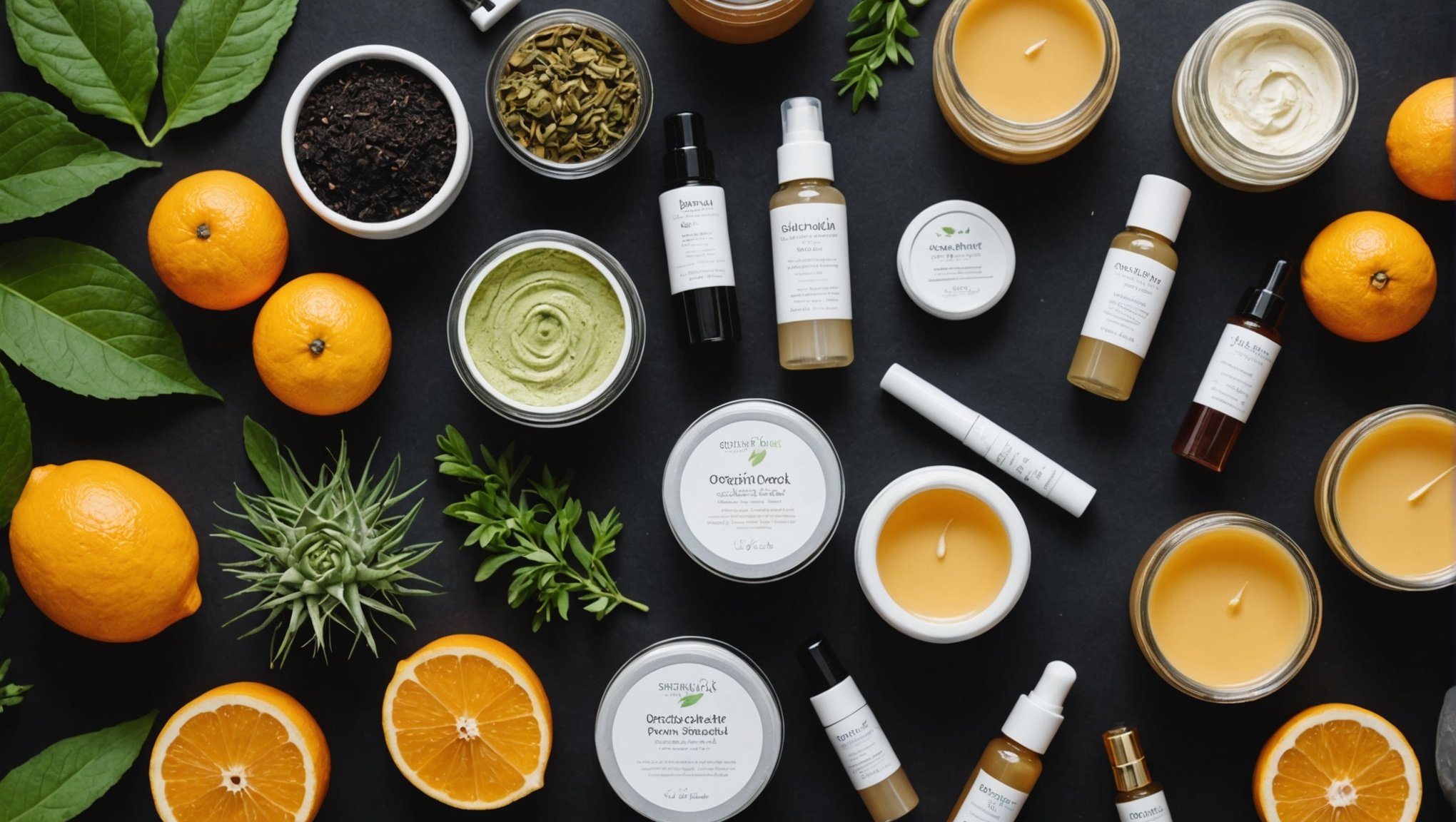Legal Requirements for Organic Skincare Brands in the UK
Navigating the legal compliance landscape is crucial for aspiring organic skincare brands in the United Kingdom. Understanding the skincare regulations is the first step toward ensuring that your products are both safe and marketable. It is a legal requirement for all skincare brands to comply with the UK Cosmetics Regulation, which aligns with the EU Cosmetic Regulation (EC) No 1223/2009. This regulation covers safety assessments, product labelling, and ingredient restrictions, ensuring that products are safe for consumers.
Next, securing the necessary certifications is essential for those marketing their products as organic. The certification process often involves documentation proving that the ingredients are naturally sourced and meet organic farming standards. Popular certifications include Soil Association Organic and COSMOS Organic, which serve as trust indicators for consumers.
Also to read : Comprehensive Guide to Establishing Your Own Marine Conservation Consultancy in the UK
Business registration is another critical step. Any skincare business must register with the UK government’s Companies House. Additionally, it is vital to ensure that financial aspects, including taxes and insurance, are appropriately managed. Following these steps not only helps in legal compliance but also builds credibility.
The journey involves understanding the regulatory framework, obtaining requisite certifications, and completing business registration for full compliance and market readiness.
In the same genre : Step-by-Step Guide to Launching a UK Online Book Club: Navigating Data Protection Compliance
Product Formulation and Ingredient Sourcing
Creating organic skincare products demands an understanding of formulation techniques and sourcing strategies suited to the U.K. market. Let’s delve into the essentials.
When formulating organic products, prioritise ingredients cultivated without synthetic pesticides or fertilisers. These organic ingredients are selected to ensure the purity and effectiveness of skincare solutions. Key considerations include balancing natural extracts to achieve desired consistencies and property benefits, which prevent product degradation and maintain skin safety.
Sourcing strategies play a pivotal role in the development of organic skincare products. Establishing long-term partnerships with certified organic farmers and suppliers is crucial. Collaborating with suppliers who provide transparency in their cultivation methods ensures ingredient authenticity and supports ethical sourcing practices.
In the U.K., compliance with ingredient labelling standards is vital. Labelling must truthfully represent product components, adhering to regulations set by organisations like Soil Association. Understanding these standards helps maintain consumer trust and meet legal obligations.
For high-quality sourcing, look for vendors with certifications from reputed organic bodies. Their credentials give assurance of the organic nature and quality of ingredients. By focusing on these aspects, skincare producers can offer products that are both beneficial for the skin and environmentally responsible, fostering consumer confidence.
Creating a Brand Identity
Defining your brand values and mission is a cornerstone of successful brand development. This involves crafting a narrative that reflects your core beliefs and what you aspire for your brand to become. Clarifying these aspects enables you to align your strategies across marketing, communications, and design, creating a cohesive message that resonates with your target audience.
Understanding your target audience is another pivotal aspect. Who they are, what they value, and how they think about products like yours should influence every decision you make, from branding to product features. Engaging with your audience through surveys or social media can provide profound insights into their preferences and behaviours, helping refine your brand identity effectively.
A significant aspect of brand development is packaging design. For brands advocating organic products, packaging should reflect this commitment to sustainability and authenticity. It’s not just about aesthetics; it’s about echoing the brand’s organic principles and ensuring that the packaging aligns with the values held by the target audience. Thoughtful packaging design can become a powerful communication tool, influencing consumer perceptions and enhancing brand loyalty. Thus, investing time and resources into designing such packaging can yield significant returns in brand recognition and customer trust.
Marketing Strategies for Organic Skincare
In today’s digital age, leveraging digital marketing is crucial for reaching a broader audience in the organic skincare industry. Brands can employ a range of strategies to amplify their reach and engagement.
One effective method is through a strong social media presence. Platforms like Instagram and TikTok provide opportunities for organic skincare brands to showcase their products in an engaging manner. Sharing behind-the-scenes content, customer testimonials, and before-and-after transformations can captivate potential customers. To enhance interaction and promotion, employing interactive elements such as polls, Q&A sessions, and live demonstrations can significantly boost engagement.
Moreover, forming partnerships with influencers in the organic skincare arena can be highly beneficial. Influencers who align with the brand’s ethos can authentically promote products to their followers, creating a ripple effect. This strategy not only increases brand visibility but also builds trust within the influencer’s community. Look for influencers who genuinely resonate with your brand’s values and can convey an authentic message.
In conclusion, combining digital marketing, effective social media tactics, and influencer collaborations are powerful ways to elevate a brand in the organic skincare market. By strategically implementing these approaches, brands can not only reach a larger audience but also foster a community of loyal customers.
Distribution Channels for Your Products
Understanding effective distribution channels is vital to expanding your product’s reach. Whether through retail partnerships or e-commerce platforms, each channel offers unique opportunities and challenges.
Exploring Retail Opportunities and Partnerships
Retail partnerships allow your products to benefit from existing market presence and customer loyalty. To capitalize on this, consider partnering with established brands or chains that align with your product’s ethos. These alliances can enhance visibility and provide an assured platform for potential consumers.
Setting Up a Successful E-commerce Platform
The rise of digital shopping makes launching an e-commerce platform a cornerstone strategy. Focus on creating a user-friendly interface and robust backend to support transactions seamlessly. Recommend prioritizing mobile responsiveness and integrating popular payment methods to facilitate easy purchasing processes. High-quality images, detailed product descriptions, and customer reviews serve to boost consumer confidence.
Strategies for Market Placement and Sales Optimization
Positioning your product effectively in the market requires thoughtful strategies. Study market trends and consumer behavior to adjust your approach. Initiatives such as special promotions, bundled offerings, and seasonal discounts can draw attention. Optimising product descriptions and utilizing SEO techniques ensures your visibility on search engines, ultimately driving sales.
By balancing retail partnerships with a strong online presence, you optimise your market reach and enhance sales potential effectively.
Insights on Consumer Trends
In an ever-evolving marketplace, understanding market trends and consumer preferences is crucial for success. The organic skincare industry, for example, reflects a growing demand for sustainable and environmentally friendly products. Many consumers are increasingly looking for ways to reduce their environmental impact and this influences their purchasing decisions.
Today’s buyers are actively seeking brands committed to sustainability. This trend is fuelled by a heightened awareness of environmental issues and a desire for more responsible consumption. As a result, companies are focusing on eco-friendly packaging and sourcing ingredients locally to appeal to this conscientious audience.
Adapting to these changing preferences is essential for brands aiming to meet consumer expectations. Businesses should consider implementing sustainable practices throughout their production chain to align with market demands. This includes targeting consumer preferences for ethically harvested, non-toxic components and showcasing transparency in how products are made.
Recognizing these market trends allows companies to maintain relevance and foster trust with their audience. By prioritising sustainability, businesses not only satisfy existing customers but also attract new ones who value ethical consumption. This approach not only benefits the planet but also positions brands as leaders in a socially-conscious era, ensuring longevity and growth in the market.











